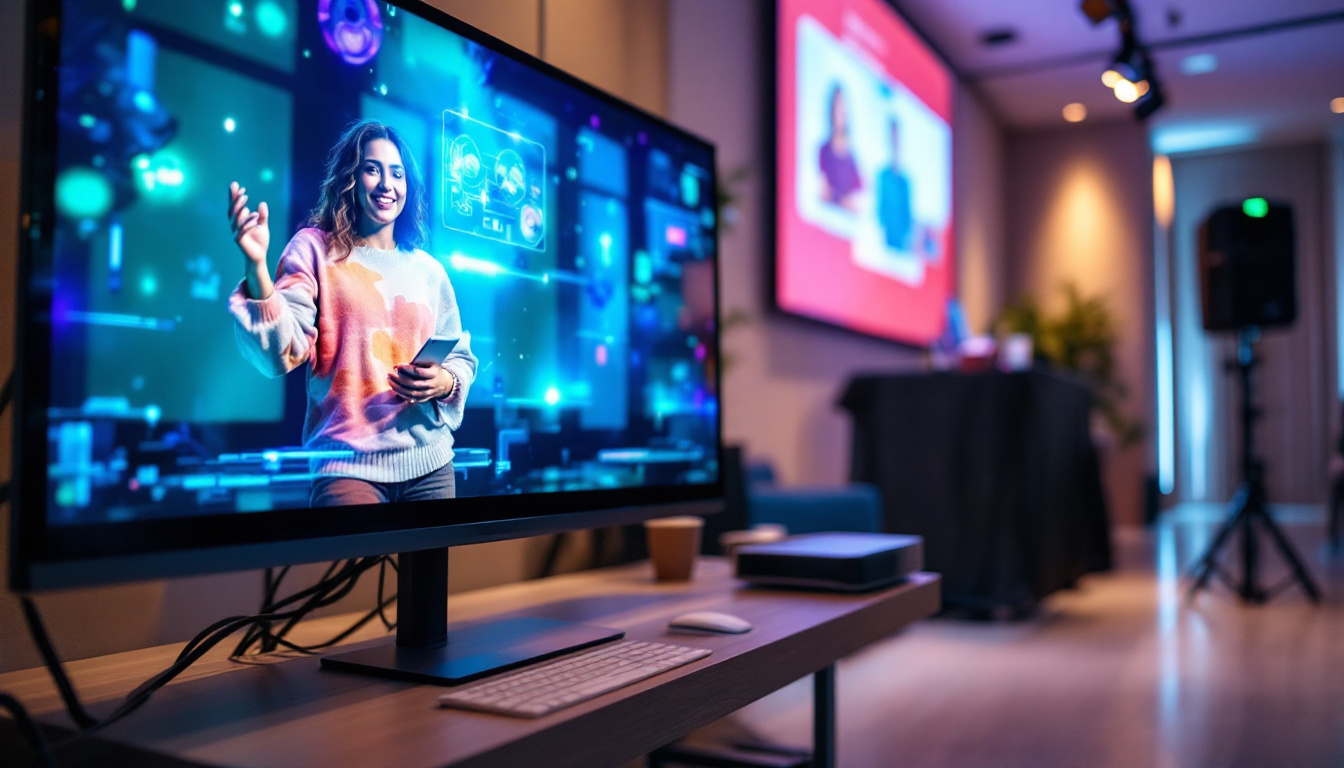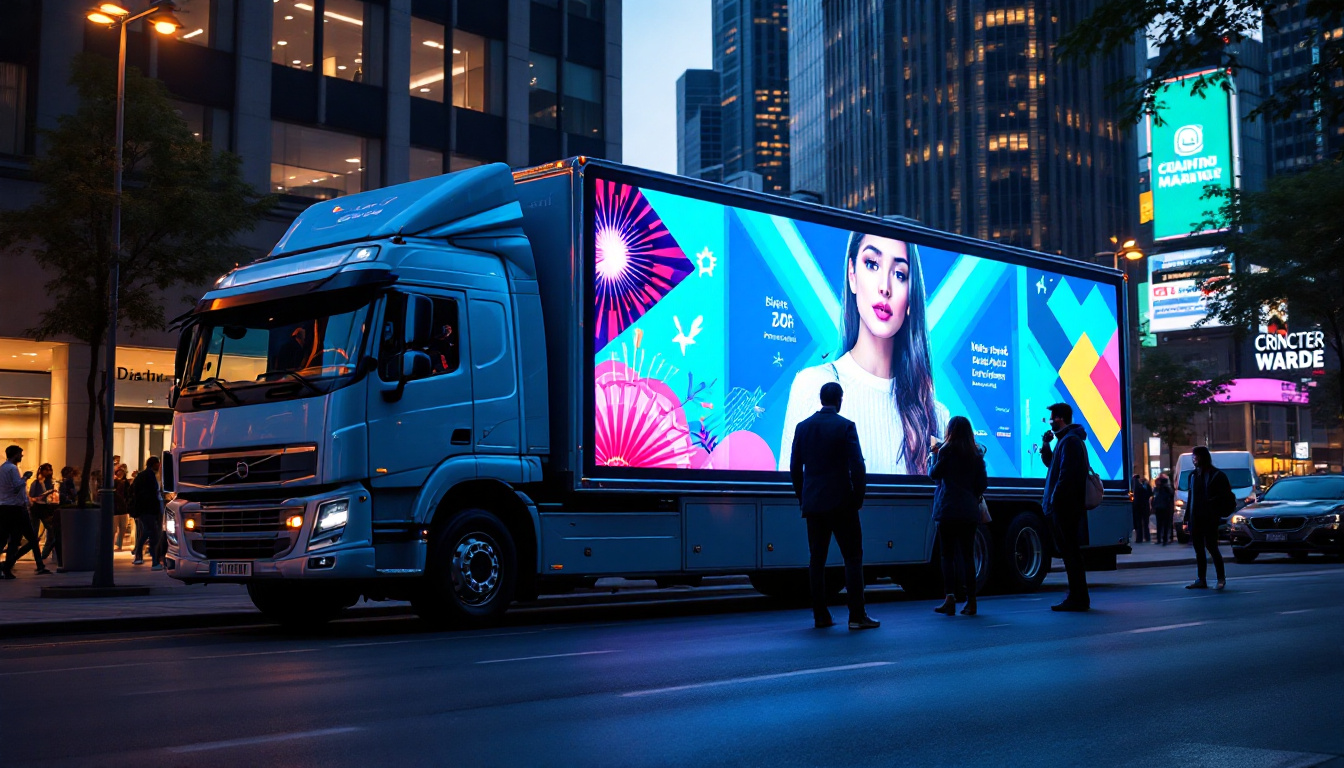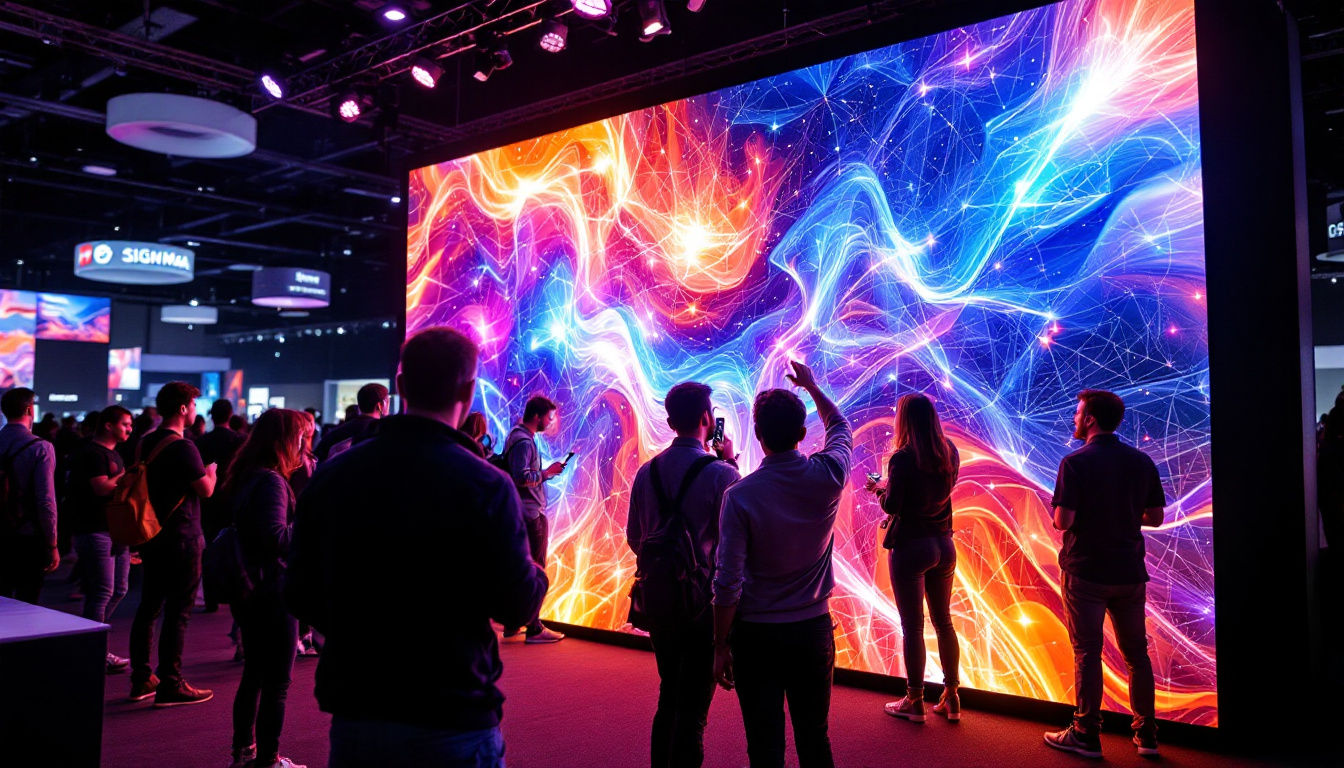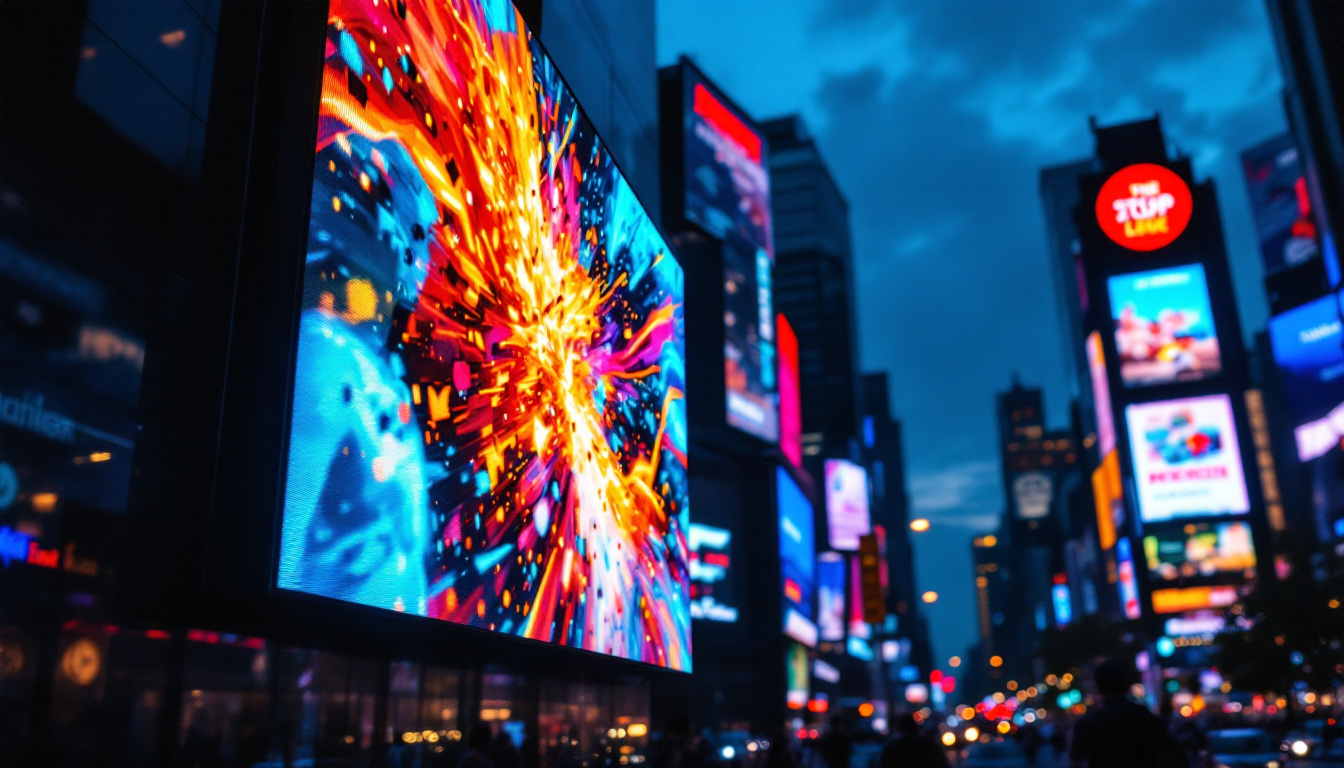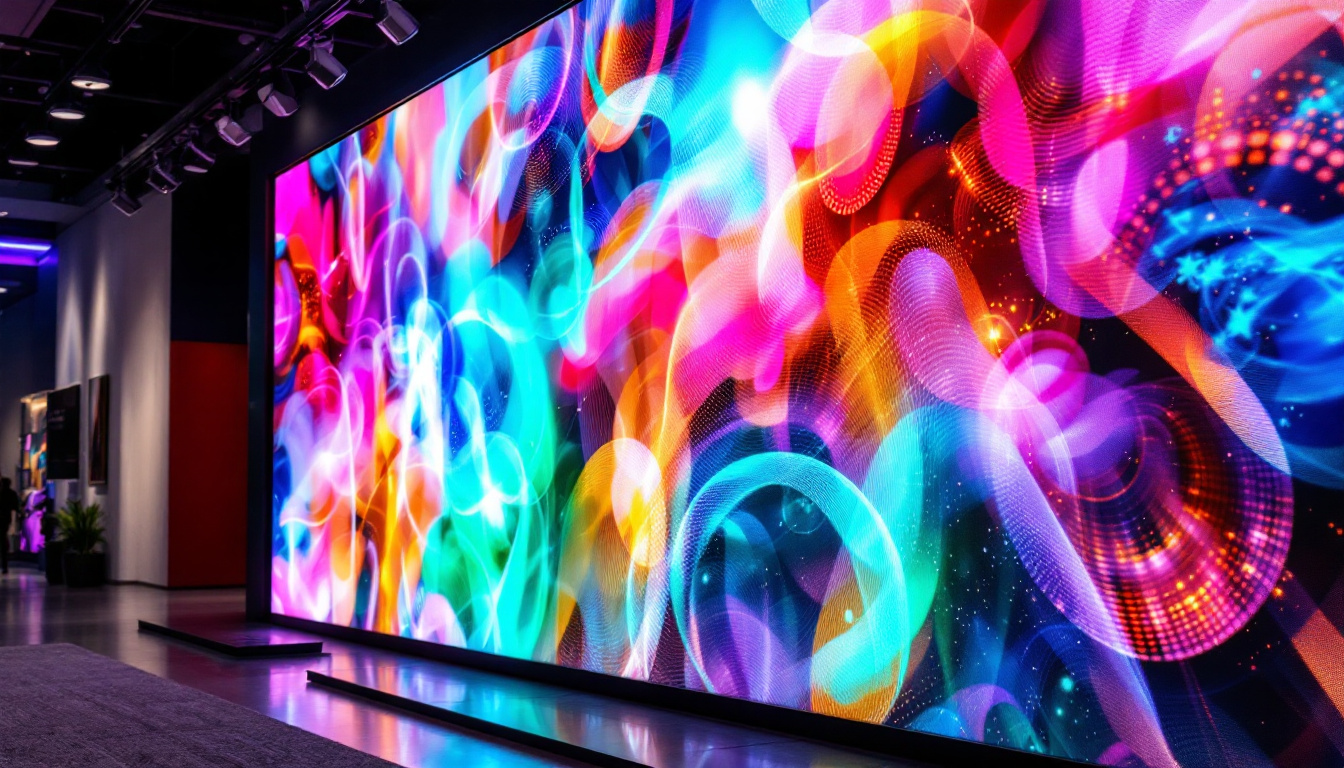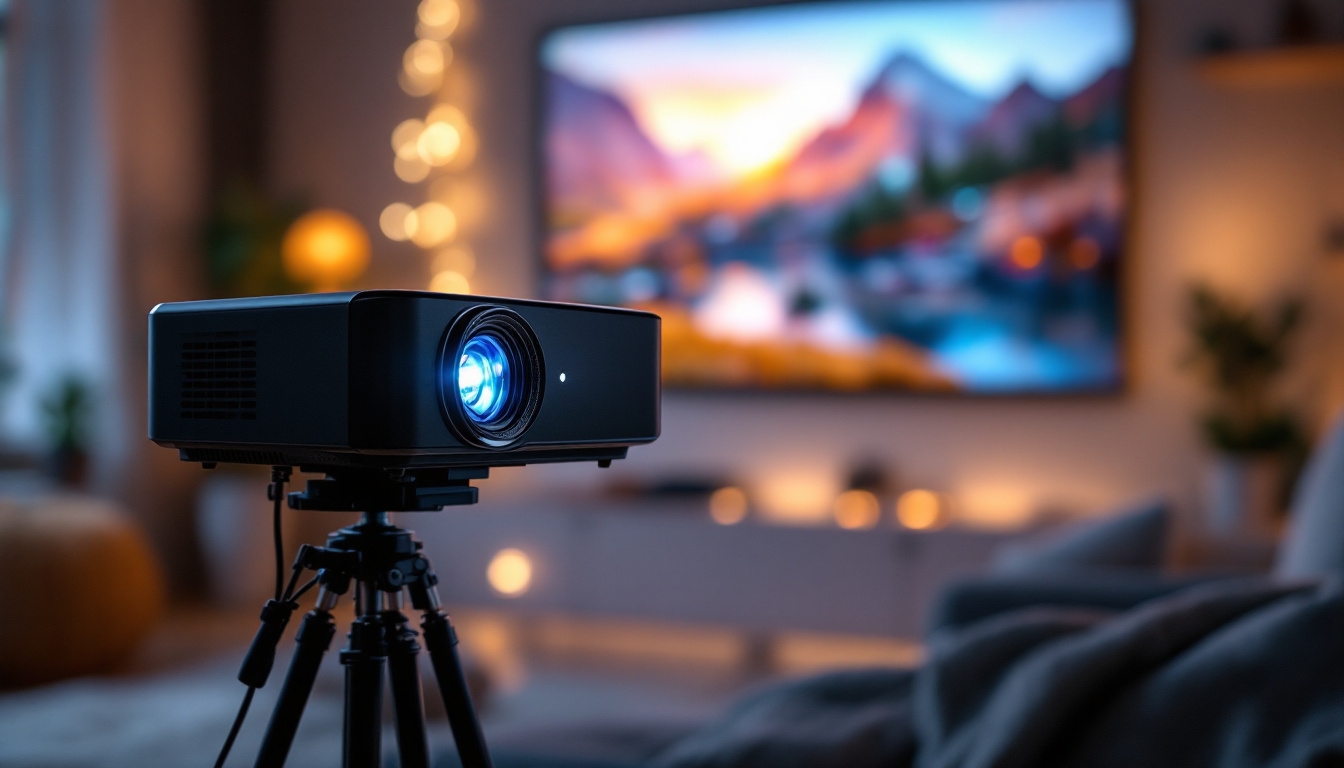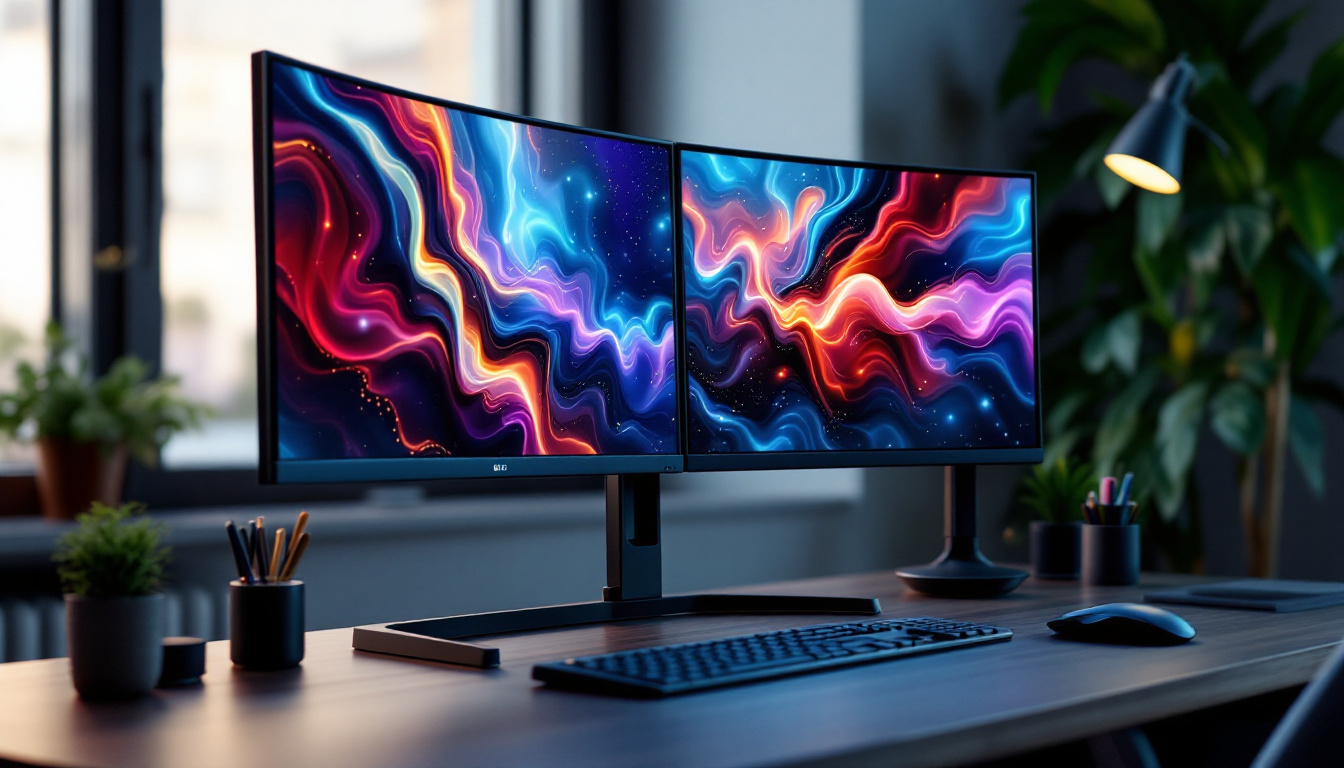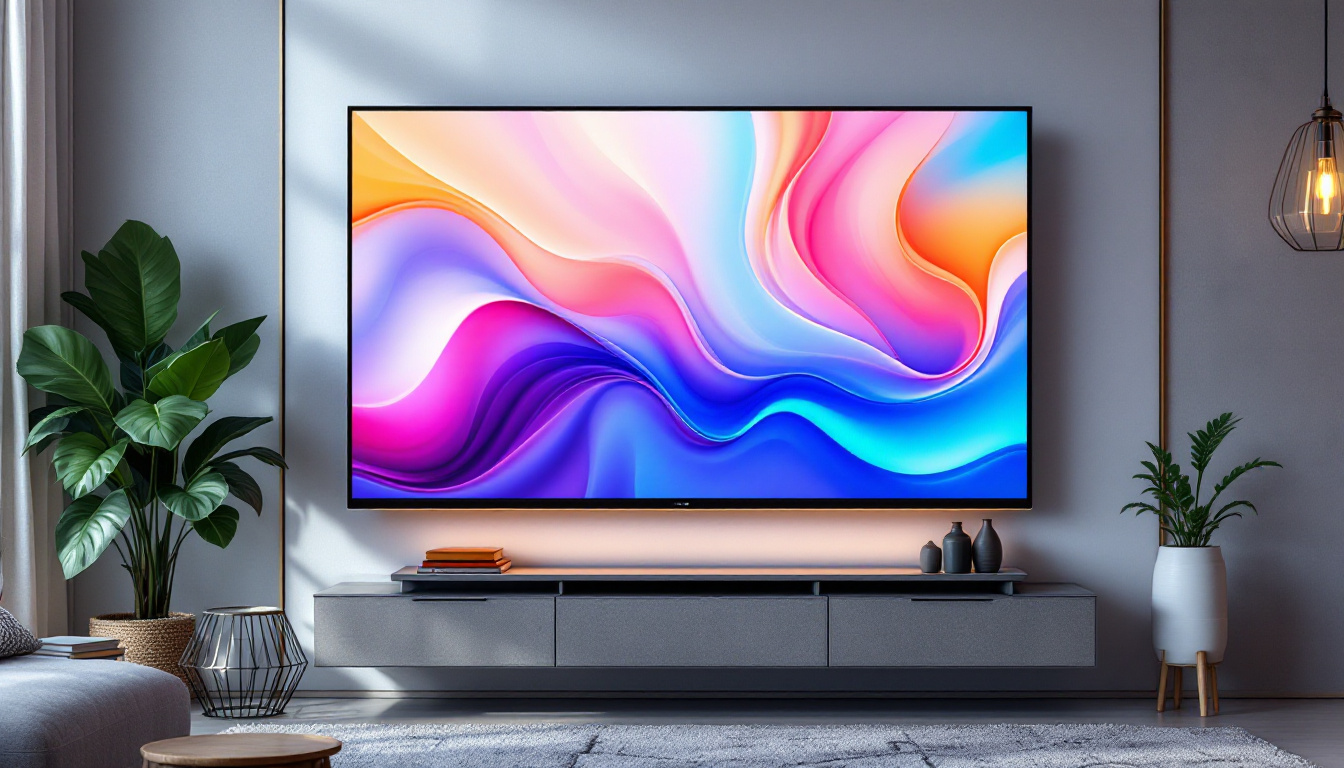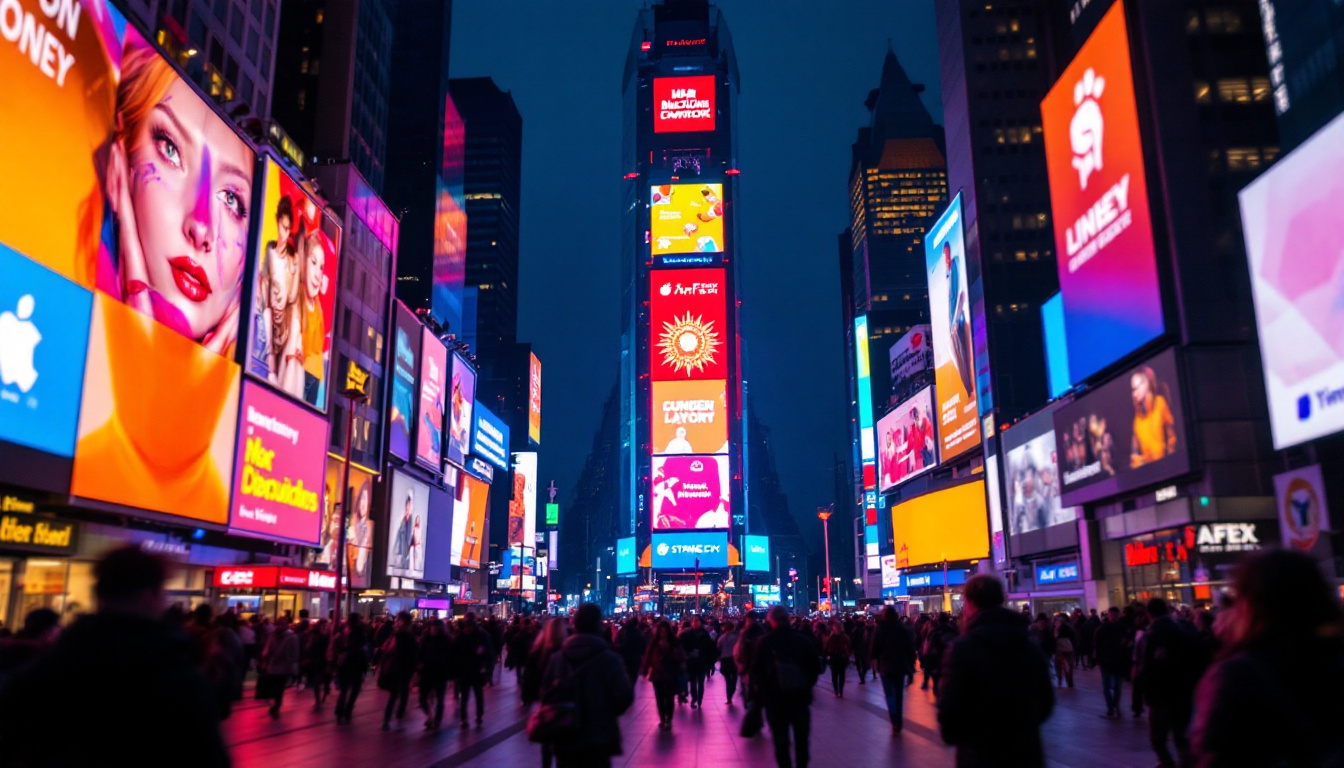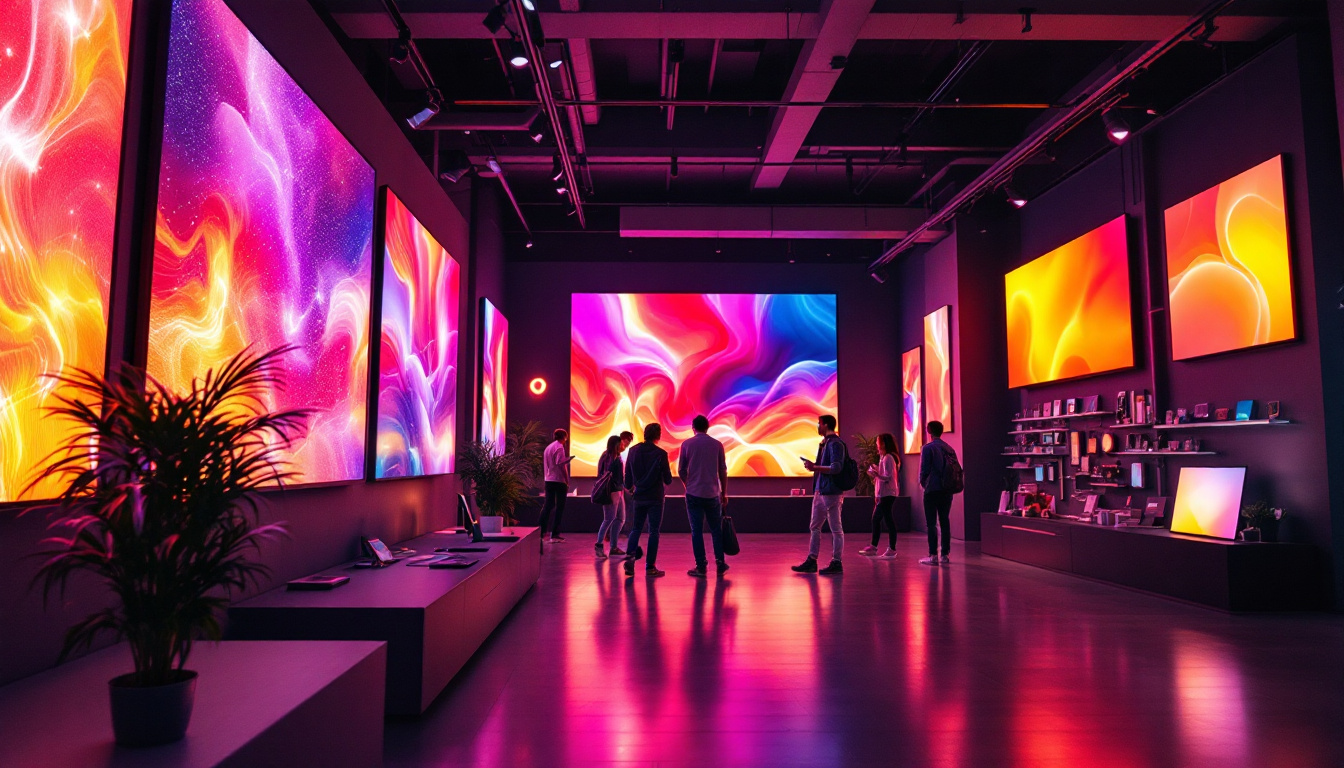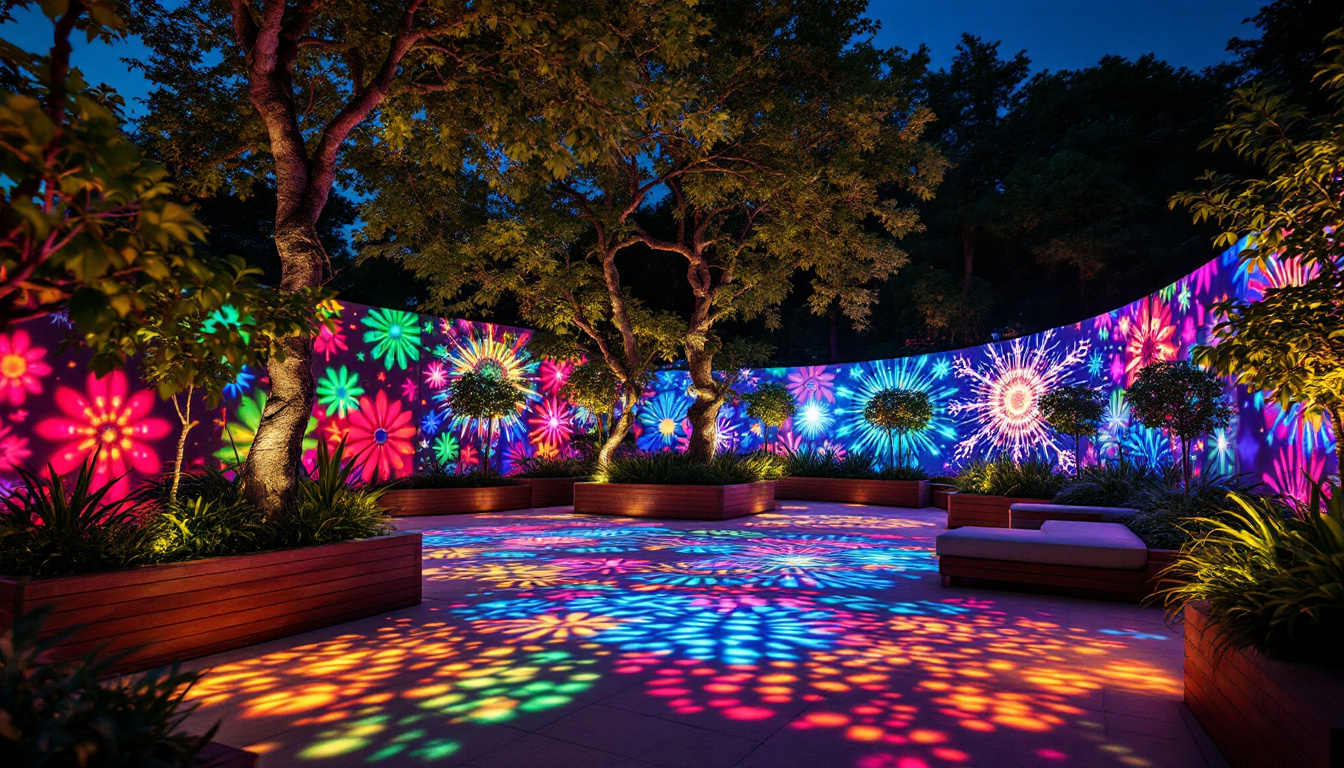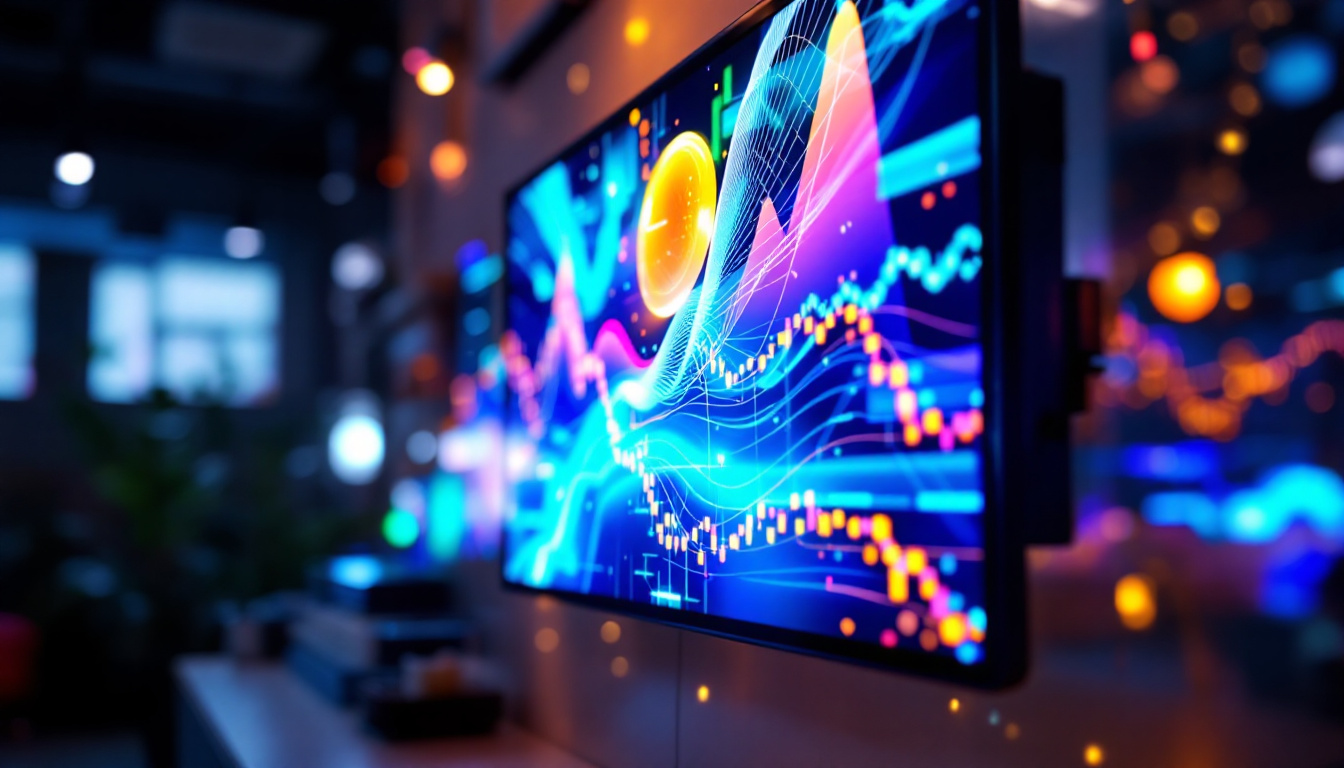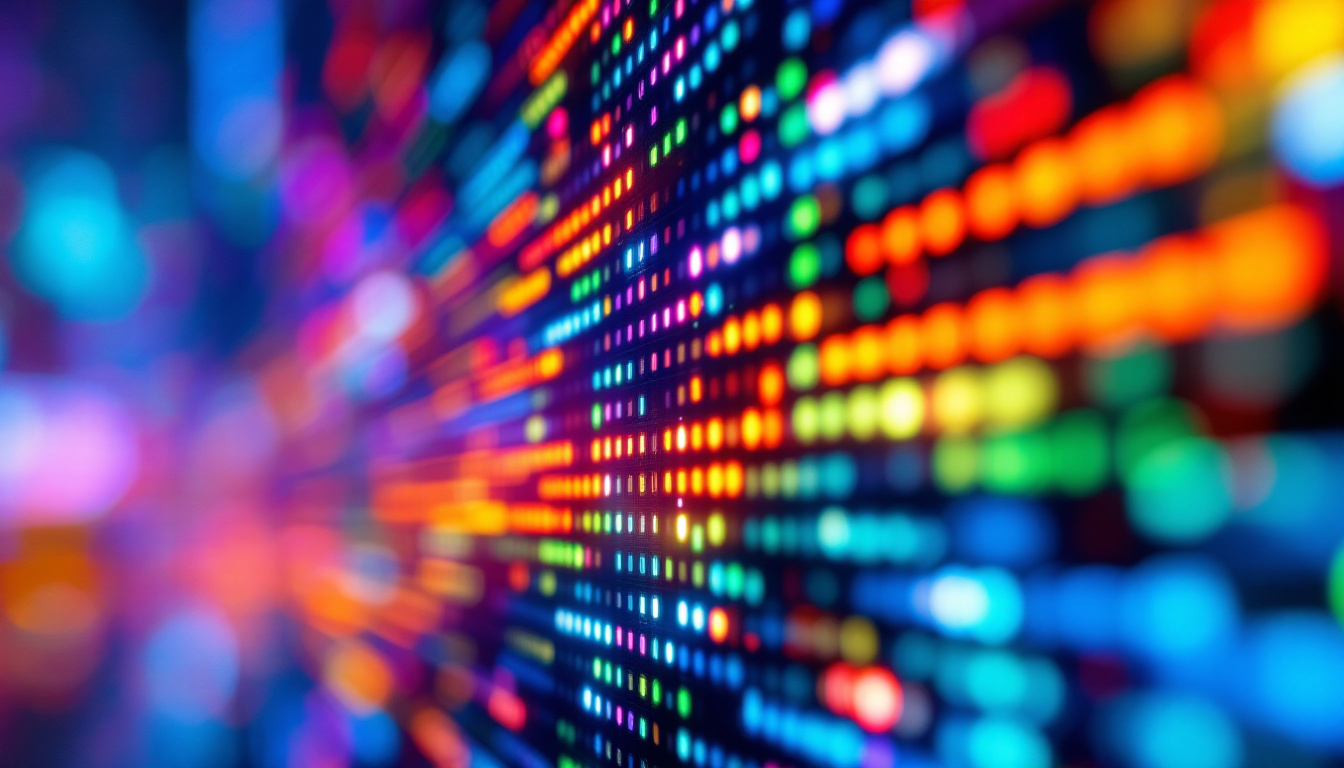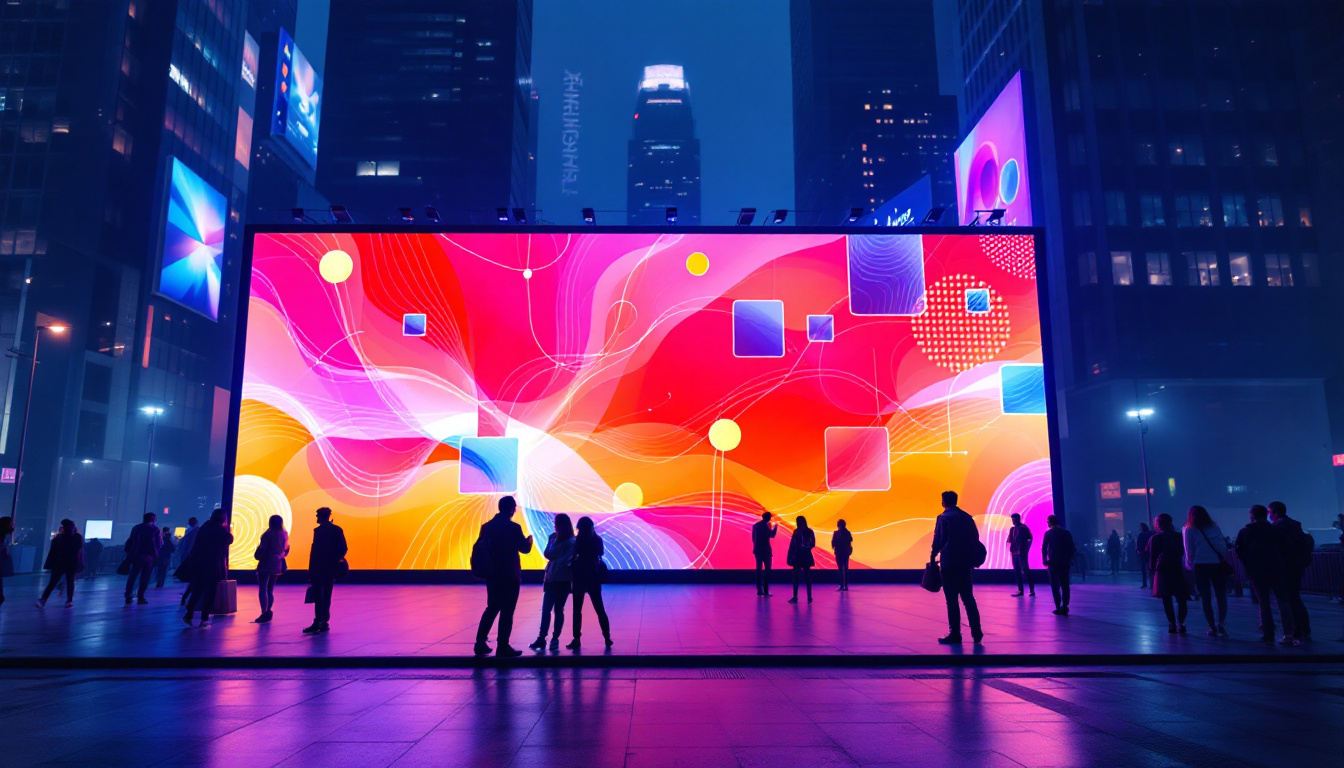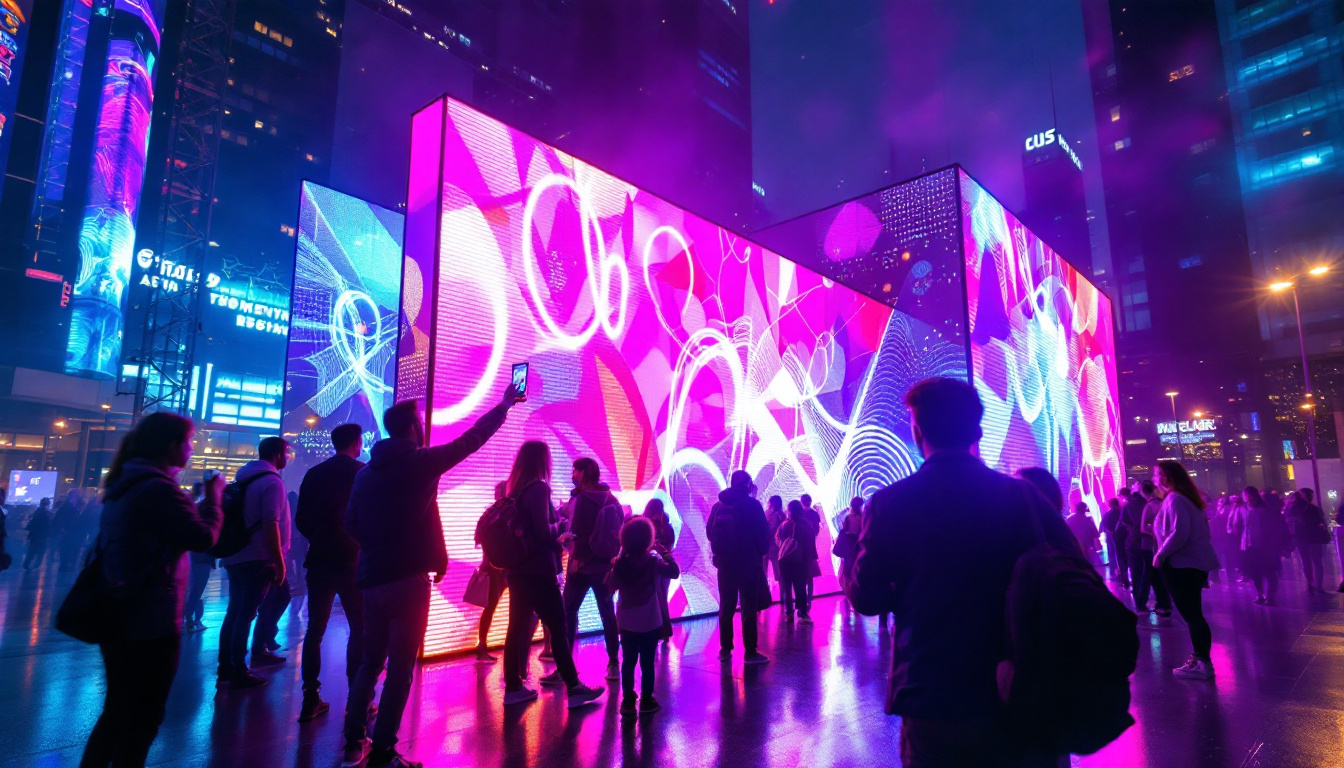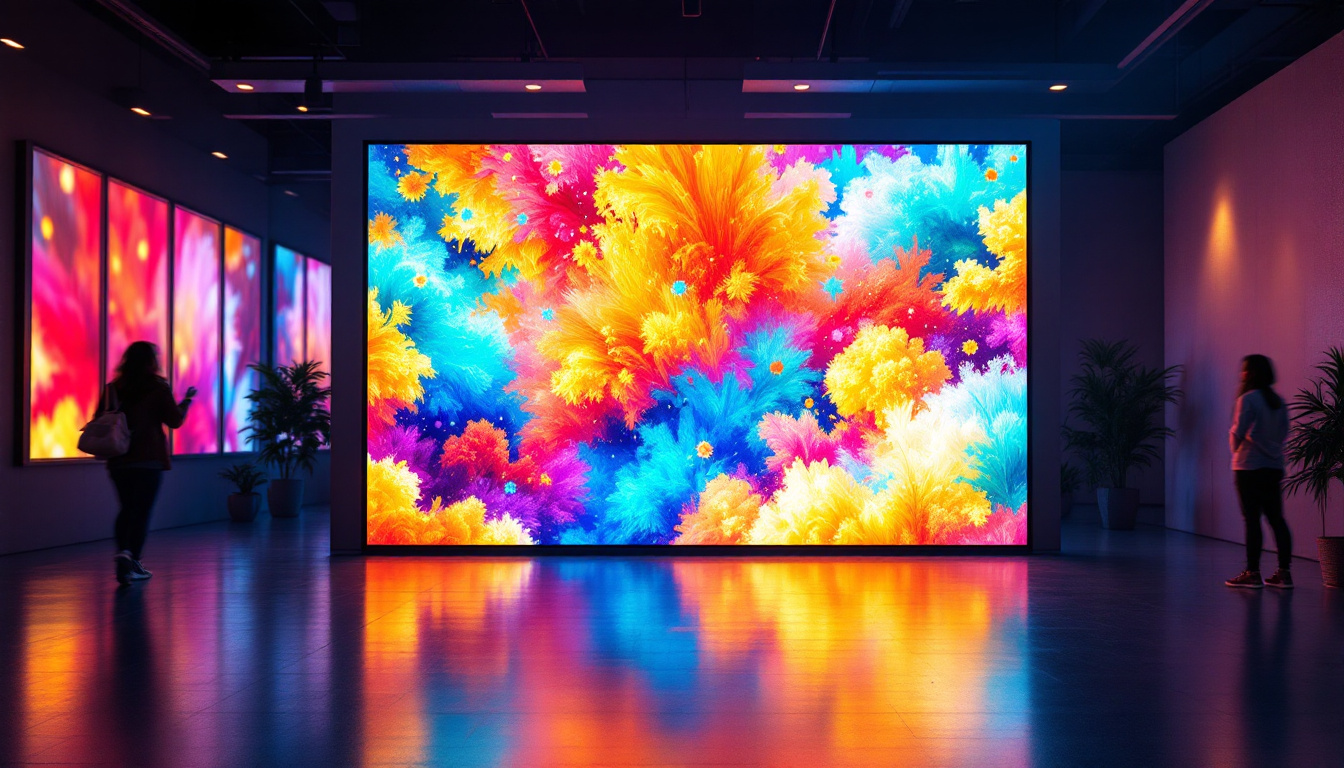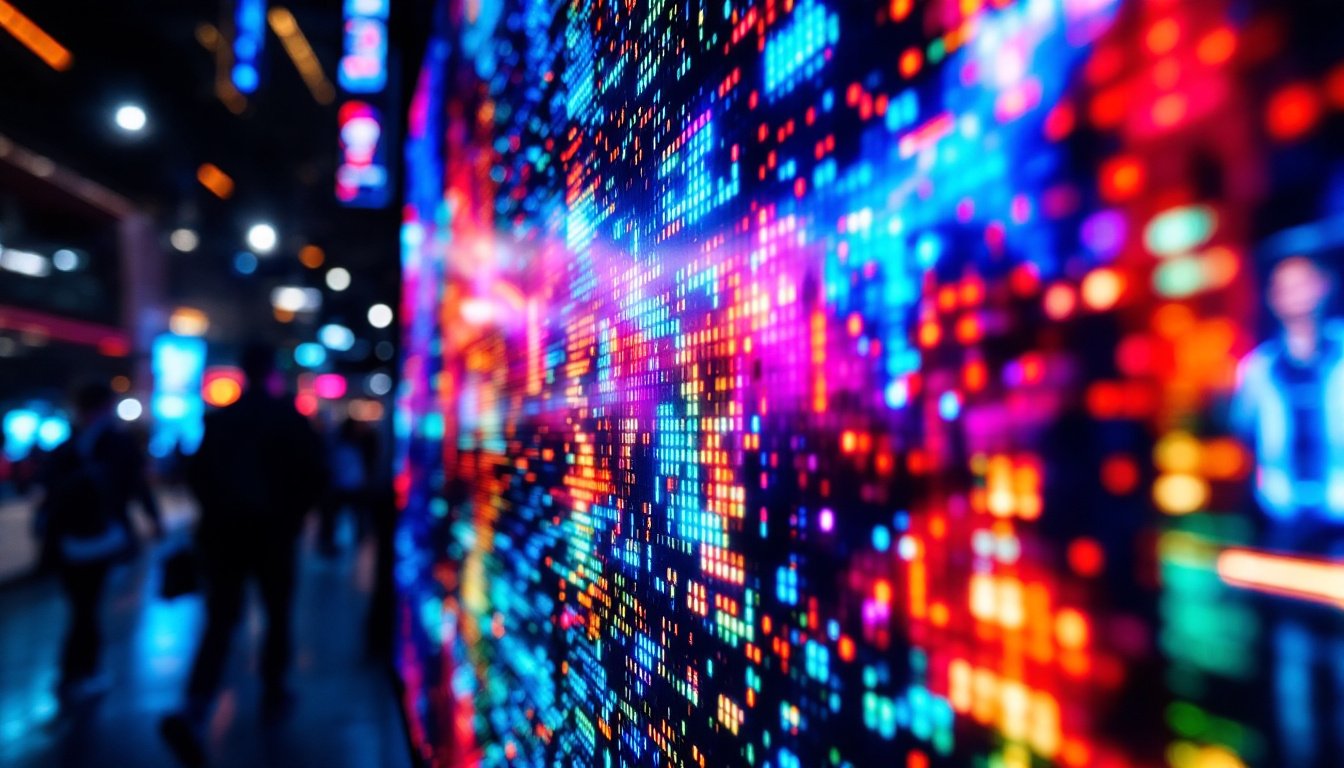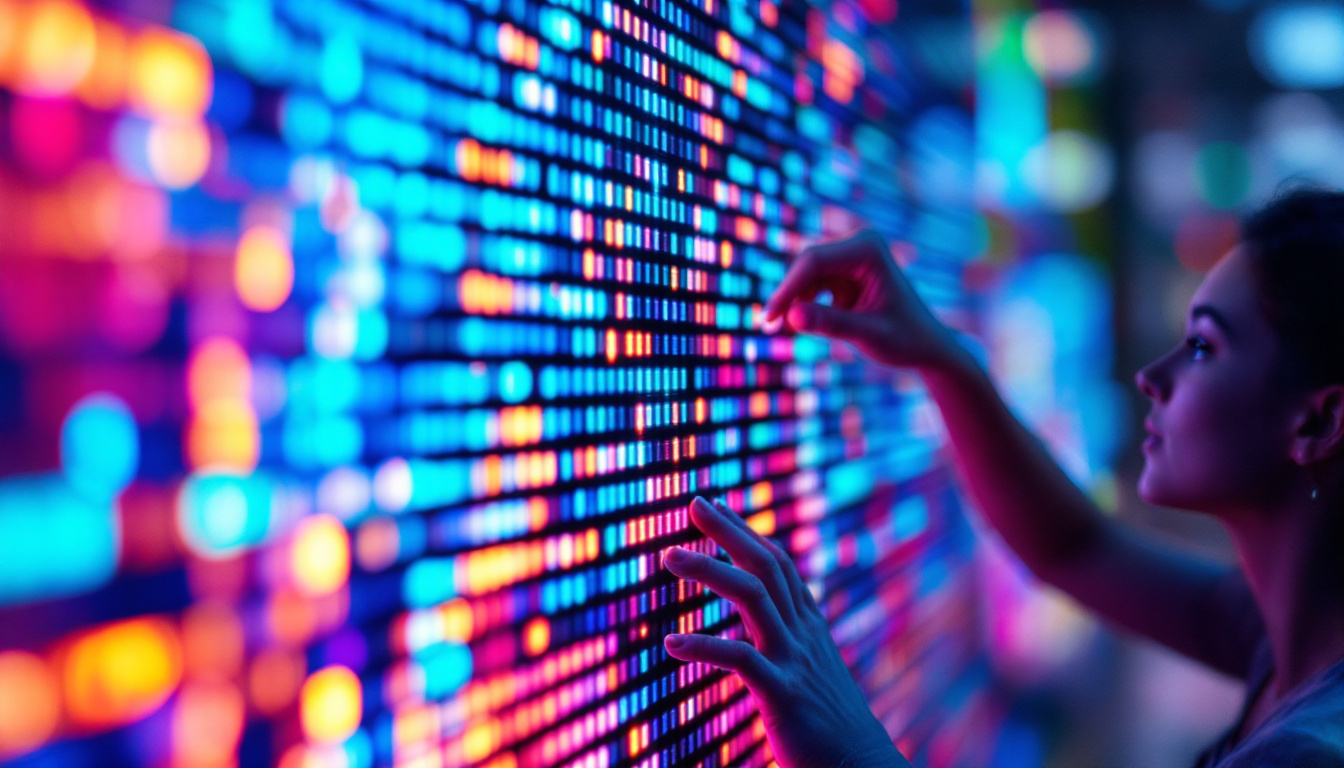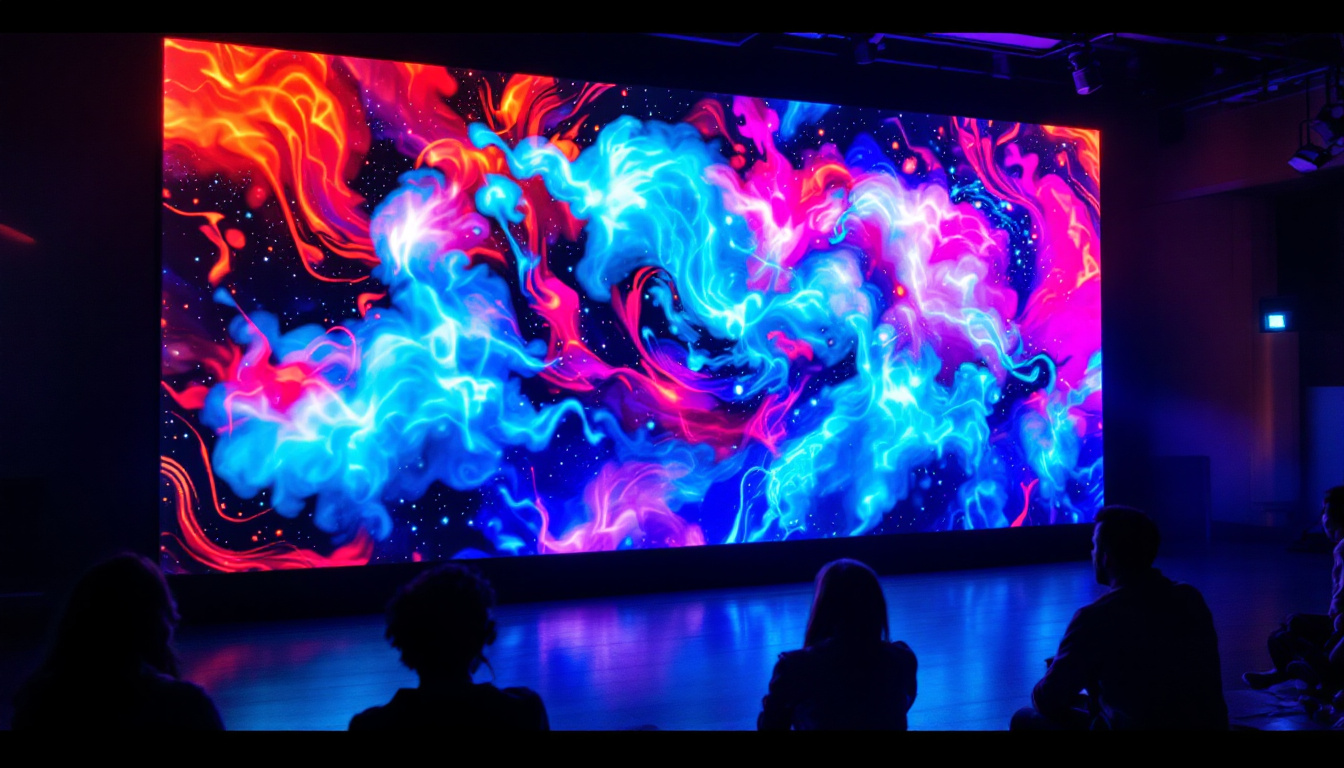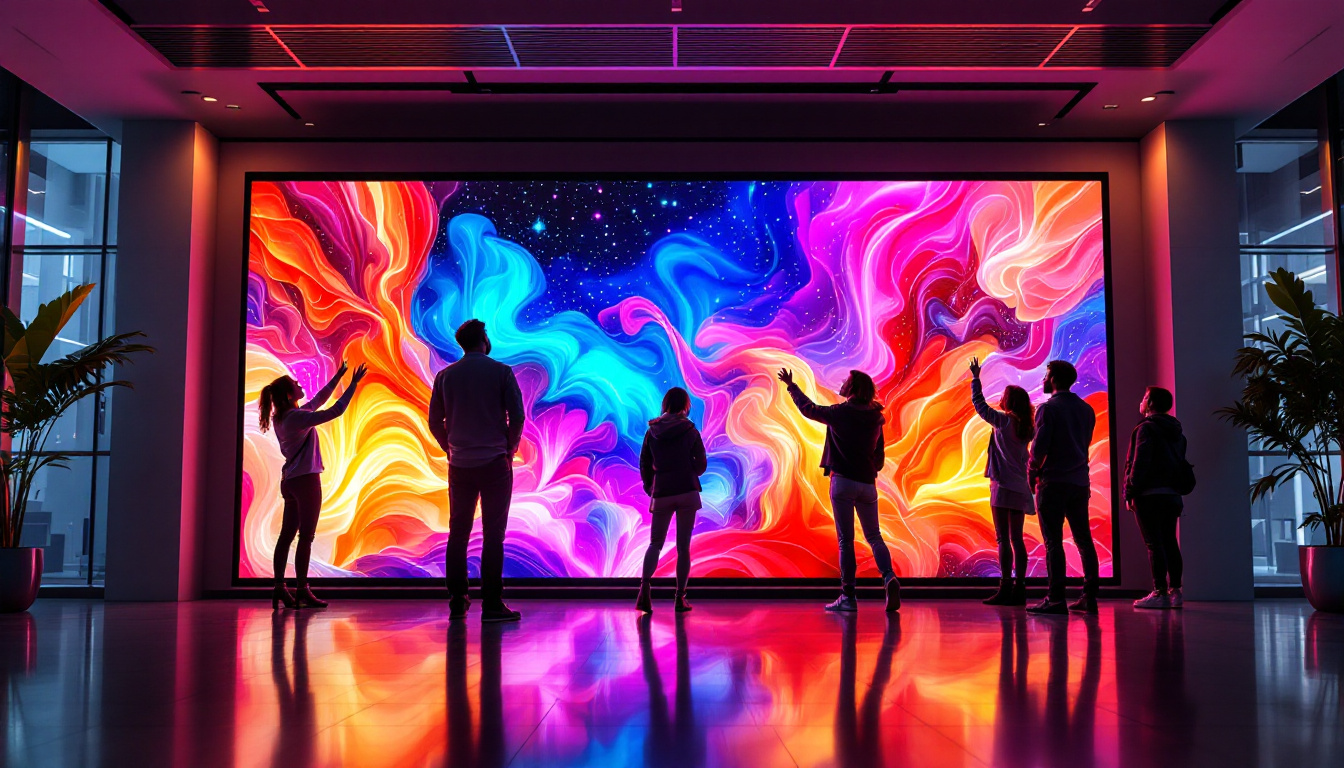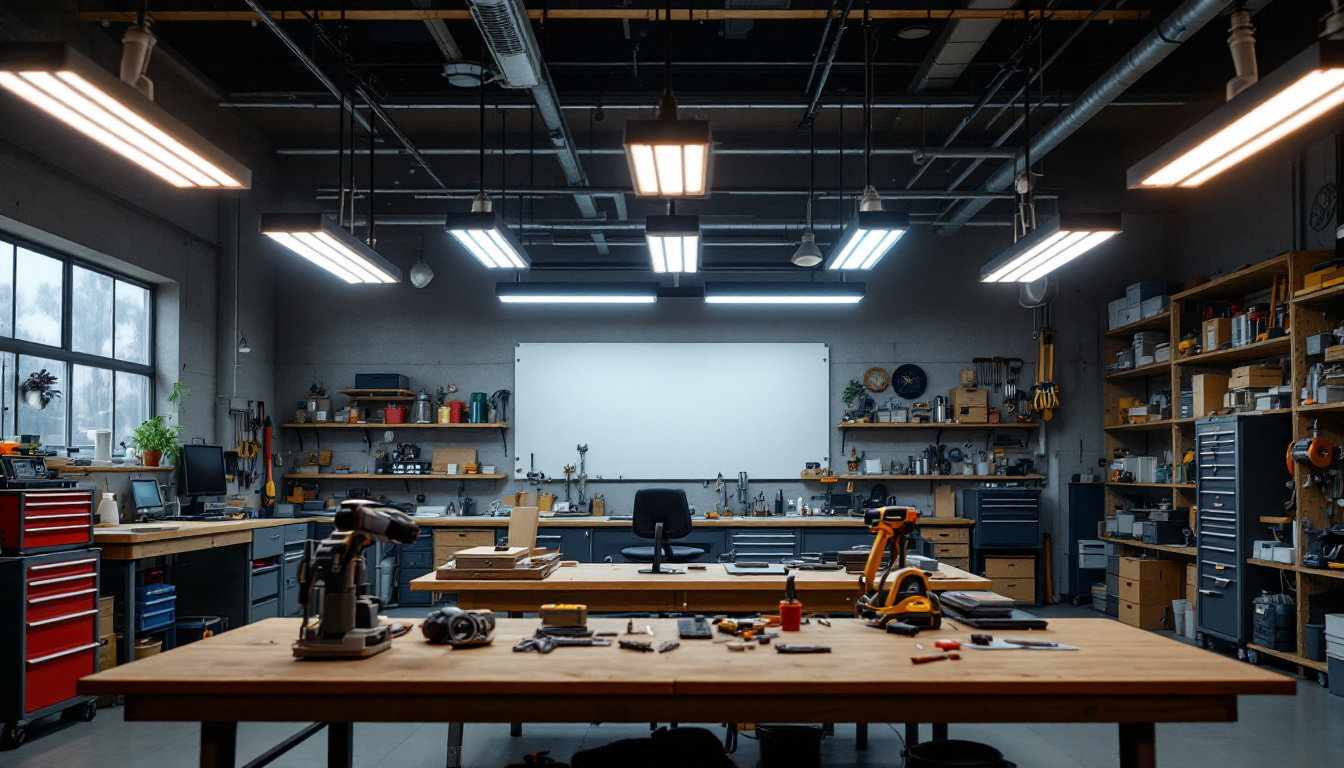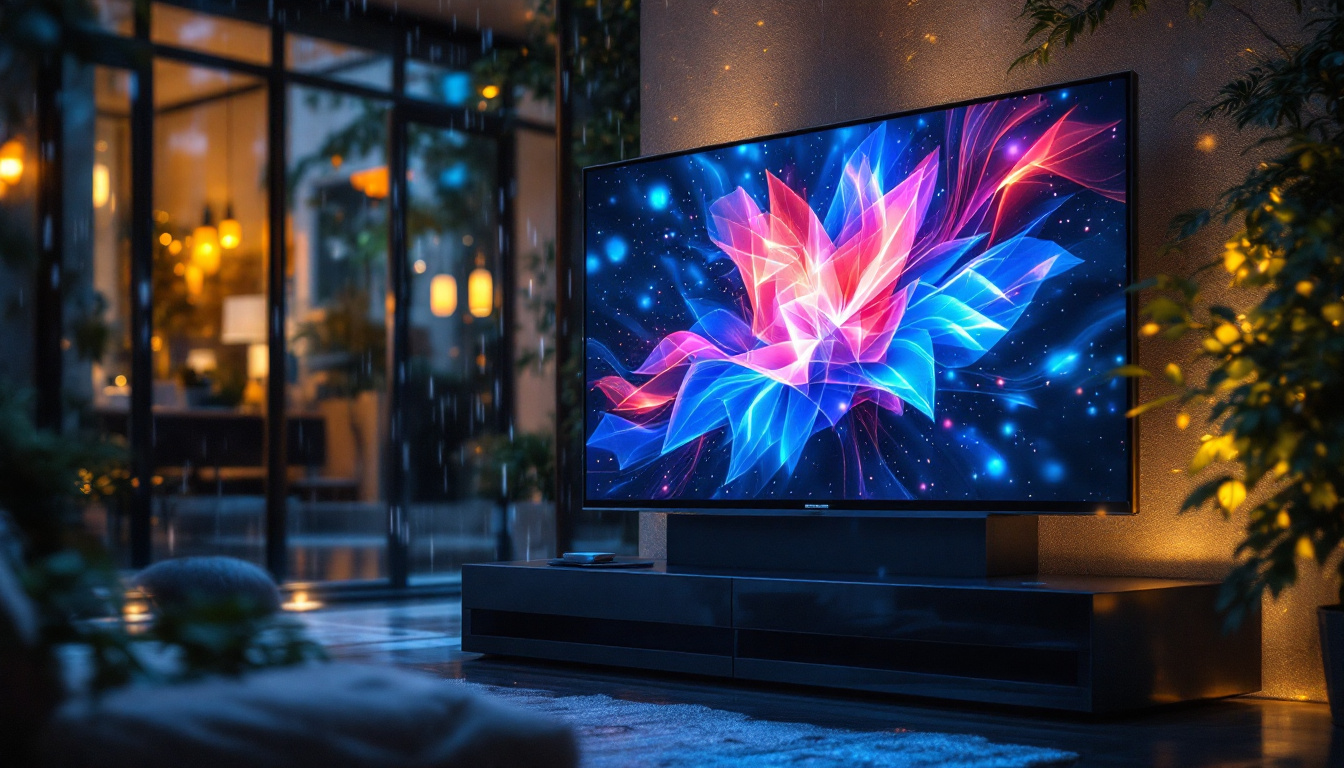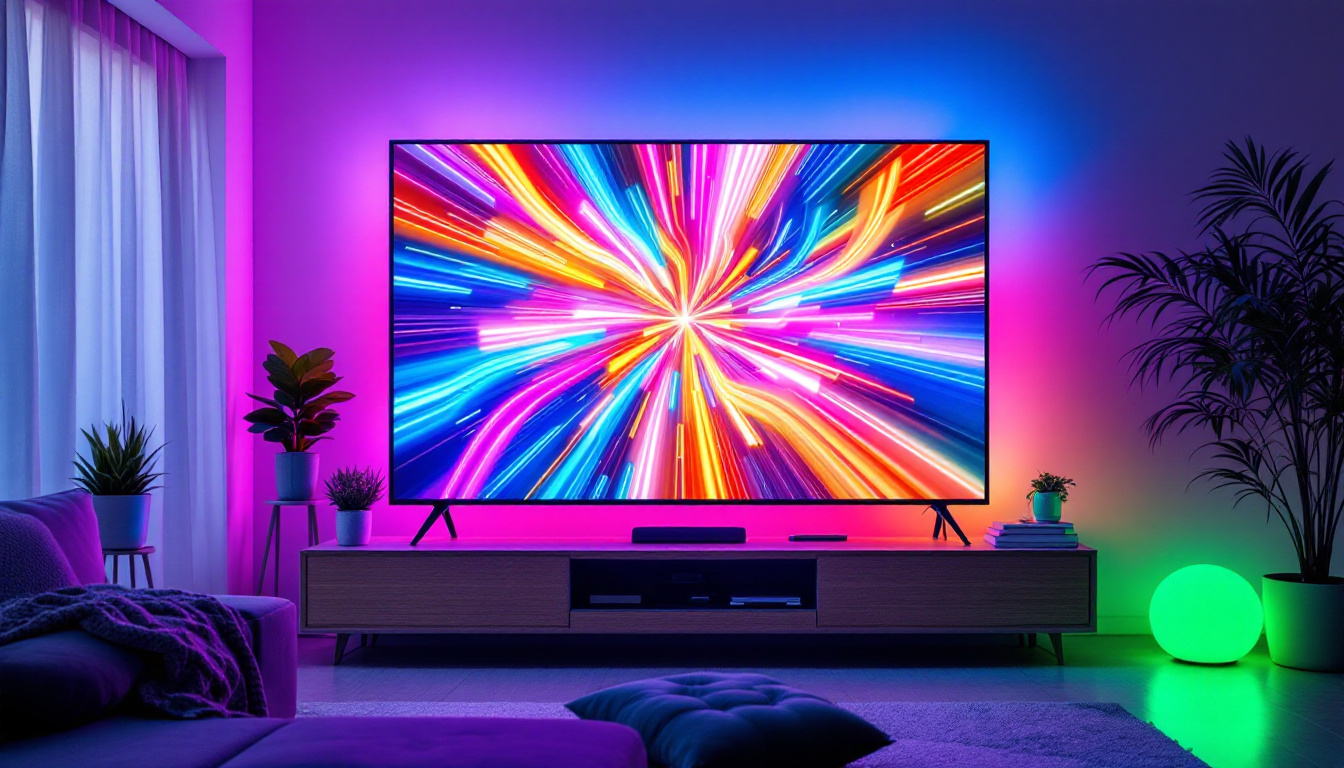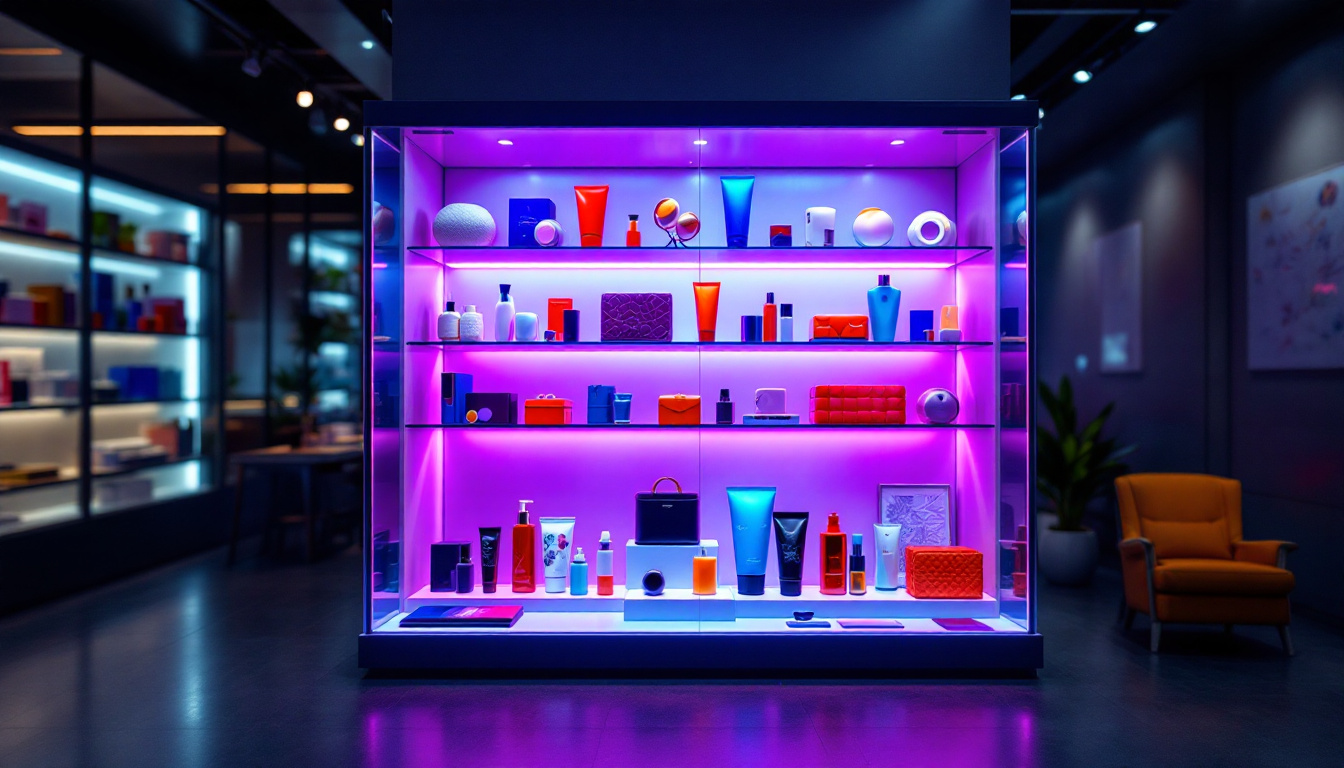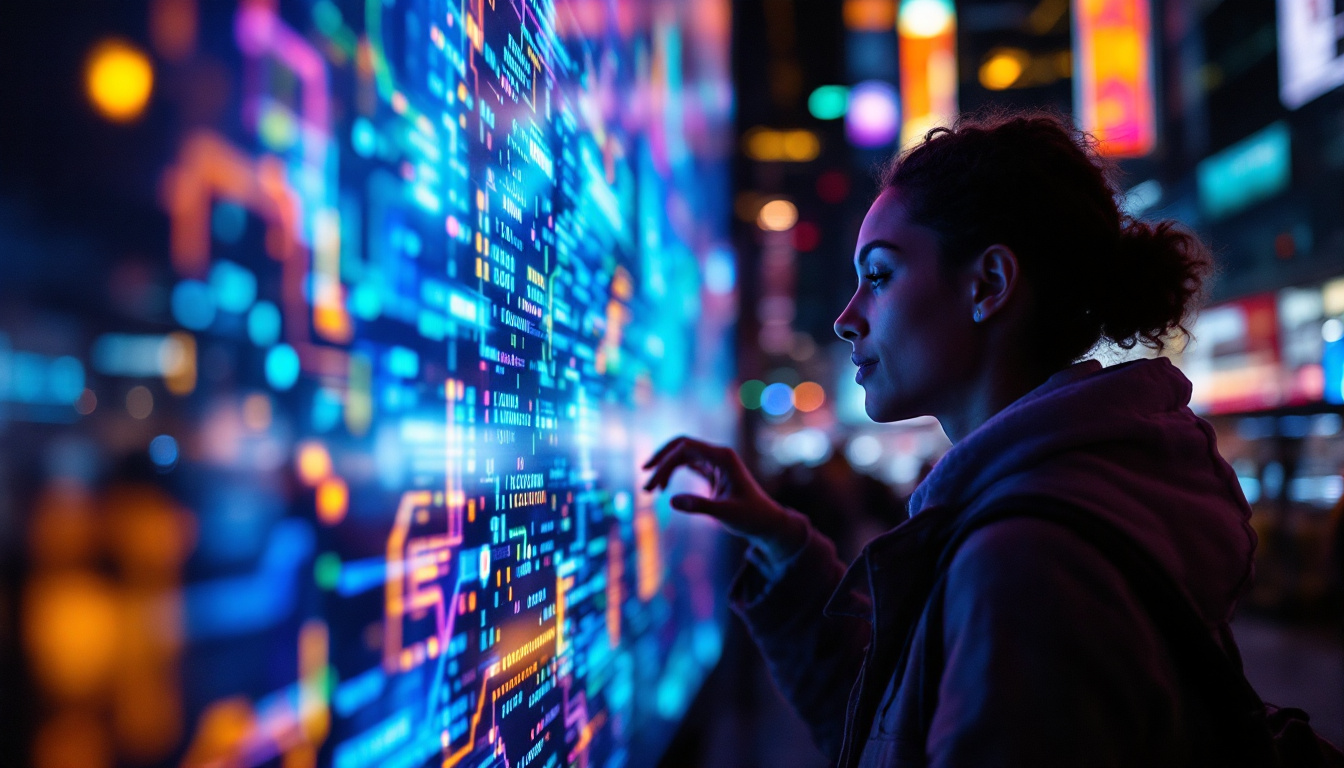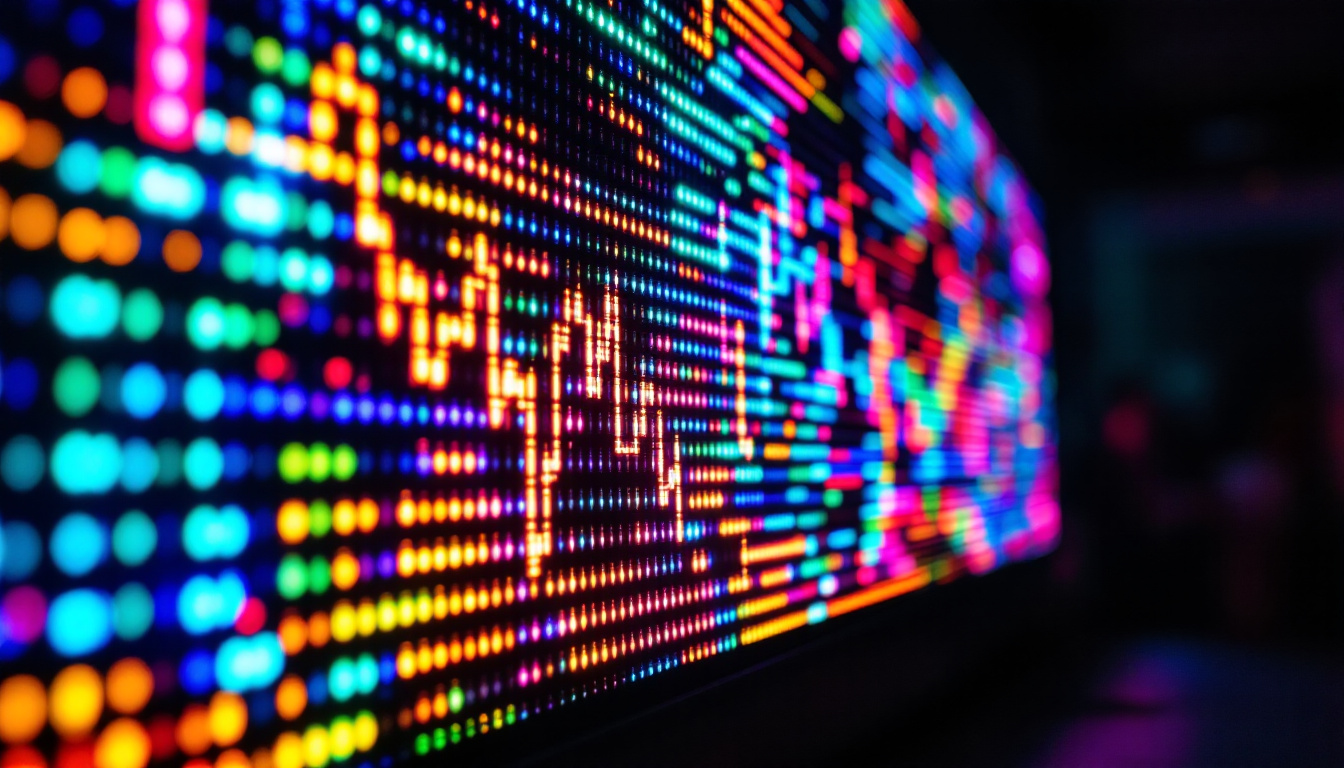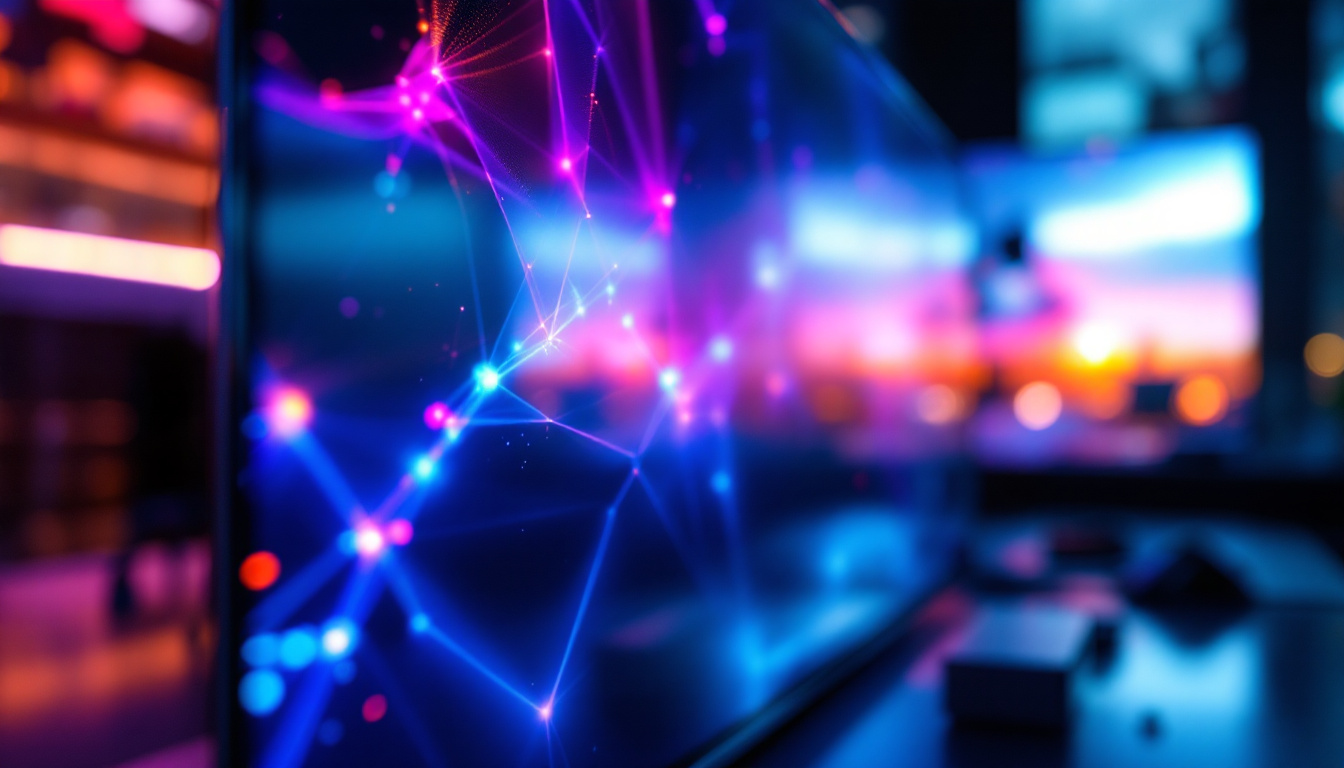In the realm of visual presentations, the choice of display technology can significantly impact the effectiveness of the message being conveyed. Among the various options available, LED displays have emerged as a popular choice for events, conferences, and exhibitions. This article delves into the intricacies of projector and screen rentals, focusing particularly on LED displays and their advantages.
Understanding LED Displays
LED, or Light Emitting Diode, displays are a type of flat panel display that utilizes LED technology for backlighting. Unlike traditional projectors that rely on bulbs to project images onto a screen, LED displays emit light directly, resulting in vibrant colors and high contrast ratios. This technology has revolutionized how visual content is presented, making it an ideal choice for various applications. From digital signage in bustling city centers to high-definition televisions in homes, LED displays have become ubiquitous in modern life, enhancing the way we consume information and entertainment.
How LED Displays Work
LED displays consist of numerous tiny diodes that emit light when an electric current passes through them. These diodes are arranged in a grid format, allowing for precise control over color and brightness. The combination of red, green, and blue diodes creates a full spectrum of colors, enabling the display to produce stunning visuals. This meticulous arrangement not only enhances color accuracy but also allows for dynamic range adjustments, ensuring that images appear lifelike and immersive.
One of the key advantages of LED technology is its ability to deliver high brightness levels. This makes LED displays suitable for both indoor and outdoor settings, as they can maintain visibility even in bright environments. Additionally, LED displays have a much longer lifespan compared to traditional projector bulbs, reducing the need for frequent replacements. The energy efficiency of LED technology also contributes to lower operational costs, making it a sustainable choice for businesses looking to minimize their environmental impact while maximizing visual appeal.
Types of LED Displays
There are several types of LED displays available in the market, each designed for specific applications. The most common types include:
- Direct View LED Displays: These are large-scale displays made up of individual LED modules. They are often used for outdoor advertising and large events due to their impressive brightness and clarity.
- LED Video Walls: Composed of multiple LED panels, video walls can create a seamless large display area. They are ideal for concerts, trade shows, and corporate events.
- LED Projection Screens: These screens combine traditional projection technology with LED backlighting, offering enhanced brightness and color accuracy.
In addition to these common types, there are also specialized LED displays designed for niche markets. For instance, transparent LED displays are gaining popularity in retail environments, allowing for eye-catching advertising without obstructing views. Similarly, flexible LED displays are being developed for unique applications, such as curved screens that can wrap around structures or be integrated into clothing. These innovations highlight the versatility of LED technology and its potential to adapt to various creative needs, pushing the boundaries of traditional display solutions.
The Benefits of Renting LED Displays
Renting LED displays for events offers numerous advantages over purchasing them outright. This approach not only provides flexibility but also ensures access to the latest technology without the burden of ownership. Here are some key benefits of renting LED displays:
Cost-Effectiveness
Investing in high-quality LED displays can be a significant financial commitment. By opting for rental services, organizations can save on upfront costs and allocate their budget to other essential aspects of their event. Rental agreements often include maintenance and support, further reducing potential expenses. Additionally, many rental companies offer tiered pricing models that cater to different budgets, allowing even smaller organizations to access premium display technology for their events. This financial accessibility can be a game-changer, enabling more creative and ambitious event planning.
Access to the Latest Technology
The technology landscape is constantly evolving, and what is cutting-edge today may become obsolete tomorrow. Renting LED displays allows organizations to stay current with the latest advancements in display technology without the need for continuous investment. This ensures that presentations are always visually appealing and impactful. Furthermore, rental companies often provide the latest features, such as higher resolution displays and enhanced brightness levels, which can significantly improve visibility in various lighting conditions. This means that whether it’s an outdoor festival or an indoor conference, the visuals will remain striking and engaging for all attendees.
Flexibility and Customization
Every event is unique, and the requirements for visual displays can vary significantly. Rental services often provide a range of options, allowing clients to choose the size, resolution, and configuration that best suits their needs. This flexibility ensures that the display complements the overall event theme and enhances the audience’s experience. Moreover, many rental companies offer additional services such as on-site technical support and setup assistance, which can alleviate the stress of managing complex audiovisual needs. Clients can also request custom graphics or branding to be displayed, ensuring that their message is not only seen but also resonates with the audience on a personal level. This level of customization can turn a standard presentation into a memorable experience, fostering deeper connections with attendees.
Choosing the Right Projector and Screen Rental
When considering projector and screen rentals, it’s essential to evaluate several factors to ensure the chosen equipment meets the specific needs of the event. Here are some key considerations:
Event Type and Venue
The type of event and the venue play a crucial role in determining the appropriate display technology. For outdoor events, high-brightness LED displays are often preferred due to their visibility in bright conditions. Conversely, indoor events may allow for different projector options, including traditional LCD or DLP projectors. Additionally, the layout of the venue can impact the choice; for example, a large auditorium may benefit from a multi-projector setup to cover all angles, while a smaller conference room might only require a single unit. It’s also important to consider acoustics and lighting conditions, as these can significantly affect the viewing experience.
Audience Size and Viewing Distance
The size of the audience and the distance from which they will view the display are critical factors. Larger audiences typically require bigger screens or higher resolution displays to ensure that everyone can see the content clearly. Understanding the layout of the venue can help in selecting the right size and type of equipment. Furthermore, it’s wise to account for the seating arrangement; for instance, if the seating is tiered, a higher screen placement might be necessary to avoid obstructed views. In addition, it’s beneficial to conduct a sightline analysis to guarantee that every attendee has an unobstructed view of the presentation, which can enhance engagement and retention of the material presented.
Content Type
The nature of the content being presented also influences the choice of display technology. For dynamic presentations with video content, LED displays may offer superior performance due to their refresh rates and color accuracy. In contrast, static presentations with text-heavy slides may be adequately served by traditional projectors. Moreover, if the presentation includes interactive elements or live demonstrations, consider equipment that supports seamless transitions and quick response times. It’s also advisable to test the equipment with the actual content beforehand to ensure compatibility and to adjust settings for optimal performance. This pre-event testing can help troubleshoot any potential issues, ensuring a smooth experience on the day of the event.
Setting Up LED Displays for Events
Proper setup of LED displays is crucial to ensure optimal performance during events. This involves several steps, from selecting the right location to configuring the display settings. Here’s a breakdown of the setup process:
Location Selection
Choosing the right location for the LED display is essential for visibility and audience engagement. The display should be positioned where it can be easily seen by all attendees, taking into account any potential obstructions. Additionally, the location should have access to power sources and adequate space for installation.
Calibration and Configuration
Once the display is in place, calibration is necessary to optimize brightness, contrast, and color settings. This step ensures that the visuals are clear and vibrant, enhancing the overall presentation experience. Technicians should also test the connectivity with other devices, such as laptops or media players, to ensure seamless integration.
Testing and Troubleshooting
Before the event begins, it is crucial to conduct thorough testing of the LED display. This includes checking for any dead pixels, ensuring that audio and video sync properly, and confirming that all content displays correctly. Having a technician on-site during the event can help troubleshoot any issues that may arise, ensuring a smooth presentation.
Best Practices for Using LED Displays
To maximize the effectiveness of LED displays during events, consider implementing the following best practices:
Content Preparation
High-quality content is essential for making the most of LED displays. This includes using high-resolution images and videos that are optimized for the display’s specifications. Additionally, keeping text minimal and using large fonts can enhance readability from a distance.
Engaging Presentations
Incorporating dynamic elements into presentations can capture the audience’s attention. This may include animations, video clips, and interactive content that encourages audience participation. Engaging presentations are more likely to leave a lasting impression on attendees.
Post-Event Evaluation
After the event concludes, conducting a post-event evaluation can provide valuable insights into the effectiveness of the LED display. Gathering feedback from attendees and analyzing engagement metrics can help inform future decisions regarding display technology and presentation strategies.
Conclusion
LED displays have transformed the landscape of visual presentations, offering vibrant colors, high brightness, and flexibility for various applications. Renting LED displays for events provides organizations with cost-effective access to cutting-edge technology, allowing them to create impactful presentations without the burden of ownership.
By understanding the intricacies of LED displays, evaluating rental options, and adhering to best practices, event organizers can ensure that their visual content resonates with audiences. As technology continues to evolve, staying informed about the latest advancements will further enhance the effectiveness of presentations in any setting.
Ultimately, whether for corporate events, trade shows, or social gatherings, the right choice of display technology can make all the difference in delivering a memorable experience. Embracing the capabilities of LED displays will undoubtedly elevate the quality and impact of visual presentations for years to come.
Discover LumenMatrix’s Innovative LED Display Solutions
Ready to elevate your next event with the vibrant colors and dynamic visuals of LED displays? Look no further than LumenMatrix, a leader in LED display technology. Our extensive range of solutions, including Indoor and Outdoor LED Wall Displays, Vehicle LED Displays, LED Poster Displays, LED Sports Displays, Floor LED Displays, Custom LED Displays, All-in-One LED Displays, and LED Transparent Displays, are designed to captivate your audience and amplify your message. Experience the future of visual communication with LumenMatrix and transform your presentations into unforgettable experiences. Check out LumenMatrix LED Display Solutions today and see the difference for yourself.

